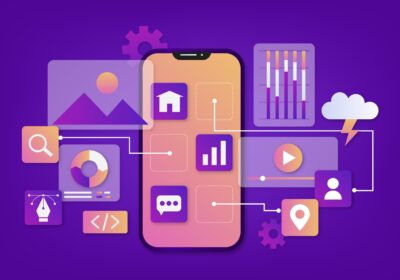Mobile devices, or rather ‘smartphones’ to be specific, have become part of our lives in just a few years. The devices have only grown smarter over the years, providing a plethora of services that can make things easier for us. But what makes these devices this smart?
The broad range of apps that provide such services deserve that credit.
Despite having different operating systems, there is still a whopping number of applications for users to choose.
In fact, according to Statista’s reports as of March 2017, Android mobile users can choose from about 2.8 million apps while iOS users have a library of close to 2.2 million applications.
Because of how significant they are today, these apps should be developed with utmost care, compromising neither on security nor user experience. Any shortcomings in an app can annoy users to the point that it’d start impacting the businesses that own the app itself. To make sure that an app usable, bug-free, secure, and performance efficient, developers make use of a variety of frameworks, some of them open source.
Businesses providing open source development services have also been booming consistently for the past few years. Many developers now choose to use open source programming languages and frameworks for development.
That said, let’s take a look at the most popular open source frameworks used for mobile application development.
1. Framework 7
Primarily chosen for the development of iOS apps, Framework 7, as of now, also offers Android support making it a unique option when it comes to building iOS apps first and then developing an Android counterpart. Its main benefit is that it facilitates iOS app development with just JavaScript, CSS, and HTML.
Other main advantages include:
- Support for cross-platform hybrid app development
- XHR caching and preloading
- Custom DOM library
2. jQuery Mobile
A popular open source framework known for its large user base, jQuery Mobile is generally an ideal choice for simpler applications that run on Windows and BlackBerry platforms. Though it lacks advanced features, its ‘write once, run anywhere’ feature makes it unique compared to its rivals.
jQuery is lightweight and allows developers to make apps that run seamlessly across all mobile devices without compromising user experience.
3. Mobile Angular UI
Mobile Angular UI is a successful combination of Angular JS and Twitter’s Bootstrap, making it a mobile UI development framework. It features Bootstrap 3’s syntax which grants developers easier web-to-mobile portability though it isn’t dependent on Bootstrap. In fact, there is no dependency to jQuery either. Its libraries include the likes of fastclick.js and overthrow.js.
4. Sencha Touch
This framework has a dedicated developer following as it makes developing cross platform end-to-end mobile applications easier with HTML5 and JavaScript. The core of Sencha Touch is ExtJS, a popular JavaScript framework. Though it’s open source, a licensed version is also available with advanced features. Its main feature is that it allows developers to reuse various custom components.
Other important features include a drag-and-drop HTML5 visual application builder, and a good collection of widgets with a native look and feel for all the popular mobile platforms.
Conclusion
Open source is not always about the huge community supporting the products and services. The growth of open source software has been rapid and consistent for many years. It has made a name in the software development sector within a short time, and has started imprinting its mark on mobile app development as well. Evidently, these frameworks and their user bases testify to the same.





